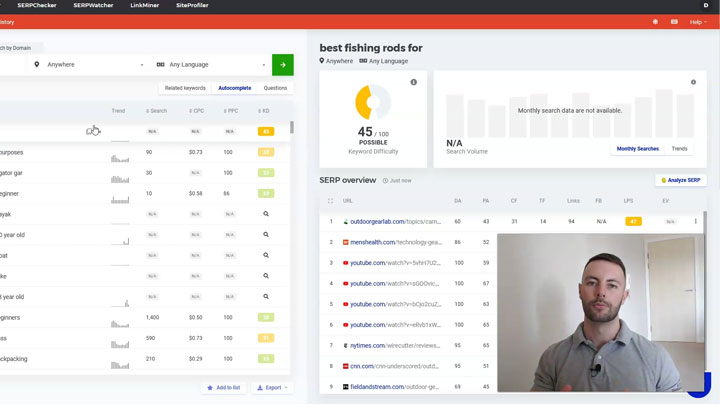Thinking about stepping into the fabulous world of fashion blogging in 2025? There’s no time like the present to start sharing your style savvy with the world!
Whether you’re passionate about haute couture or adore a good bargain hunt, creating your own fashion blog is a fantastic way to connect with like-minded individuals and build your own stylish community.
Admittedly, starting a fashion blog may seem daunting at first, but don’t worry—this guide will give you all the tips and tricks to make your mark in the fashion realm. 🙌
Why Start a Fashion Blog?
There are numerous reasons to start a fashion blog, and the excitement of sharing your unique style is just the beginning!
Firstly, a fashion blog is a fantastic way to cultivate your creativity. It gives you a platform to experiment with different looks, trends, and styles, honing your fashion sense along the way.
Additionally, blogging helps you build valuable connections. Engaging with other bloggers and your readers can lead to meaningful conversations and collaborations. It’s all about creating a fashion community where inspiration is shared freely.
On a professional level, a successful fashion blog can open doors to exciting opportunities, such as working with brands, attending exclusive events, and even turning your hobby into a career.
But on top of all that, it’s an empowering space to express your voice and opinions within the fashion industry, influencing others and making your mark.
Do Fashion Blogs Make Money?
Absolutely—fashion blogs can be profitable, and for some bloggers, they grow into highly lucrative ventures.
While income varies based on factors like audience size, engagement level, and monetization strategy, many fashion bloggers find that their blogs can become significant sources of income.
How Much Can You Earn with a Fashion Blog?
Income from a fashion blog can range from a few hundred dollars a month for beginners to thousands (or even tens of thousands) per month for seasoned bloggers with large followings.
Here’s a breakdown of potential earnings by revenue stream:
- Affiliate Marketing: With a dedicated audience, affiliate marketing can bring in steady income. Newer bloggers may earn around $200–$500 per month, while those with larger audiences might make $2,000–$10,000 monthly by promoting fashion items like clothing, accessories, and beauty products. Top bloggers with high traffic can even earn $20,000+ a month from affiliate commissions alone.
- Sponsored Posts and Brand Collaborations: Sponsored posts are often among the most lucrative opportunities for fashion bloggers. Brands pay for exposure to the blogger’s audience, and the rates vary widely depending on audience reach and engagement. Here’s a rough estimate based on follower size:
- Micro-Influencers (5k–25k followers): $100–$1,000 per post.
- Mid-Tier Influencers (25k–100k followers): $1,000–$5,000 per post.
- Top-Tier Influencers (100k+ followers): $5,000–$20,000+ per post.
- Ad Revenue: Ad income depends heavily on traffic and the type of ads you host. For example, a beginner fashion blog might earn $100–$500 per month from ads, while blogs with high traffic (50k–100k monthly page views) can make between $1,000 and $3,000 per month. Blogs with very high traffic (100k+ monthly page views) can earn $5,000 or more in ad revenue, especially if they work directly with fashion or luxury brands rather than relying solely on ad networks.
- Selling Products or Services: Many bloggers create their own products or offer services like styling consultations, e-books, or online courses. Earnings here vary widely:
- E-Books or Digital Guides: $500–$5,000 per month, depending on the price and volume of sales.
- Online Styling Services: Fashion bloggers offering styling consultations can charge anywhere from $50 to $200 per session, leading to an extra $500–$2,000 per month for popular bloggers.
- Merchandise or Clothing Line: Those who launch their own products, like a clothing or accessories line, can see substantial earnings. Initial monthly revenue might range from $1,000–$5,000, with the potential to grow much higher as the brand gains popularity.
Maximizing Your Earnings
The key to maximizing income from a fashion blog is to diversify revenue streams, stay consistent, and keep growing your audience.
Successful bloggers often use a combination of affiliate marketing, sponsored content, ads, and their own products, ensuring multiple income streams.
As your blog grows, so do your earning opportunities, with many top fashion bloggers eventually making a full-time income that rivals traditional careers.
Examples of Successful Fashion Blogs
Let’s explore some inspiring fashion blogs that have made a significant impact in the industry.
The Blonde Salad 💻
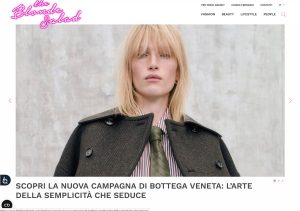
Founded by Chiara Ferragni, The Blonde Salad is a powerhouse in the fashion world. Initially a personal style diary, it has evolved into a full-fledged lifestyle brand, complete with its own fashion line. Chiara’s ability to blend fashion with business savvy has been key to her success.
Gal Meets Glam 💻
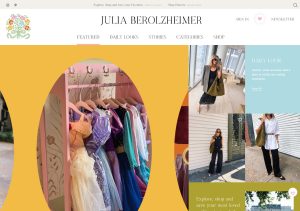
Founded by Julia Berolzheimer, Gal Meets Glam (now known simply as Julia Berolzheimer) started as a personal style blog and expanded into a lifestyle platform with its own collection of feminine, classic styles. Julia’s focus on timeless, elegant fashion has built a loyal audience who follow her for style inspiration and refined aesthetics.
SLMan 💻
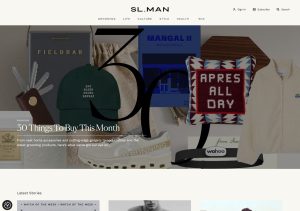
SLMan is a modern men’s guide to a more stylish life, offering insights into fashion, grooming, and lifestyle. It provides curated content that resonates with contemporary men seeking to enhance their personal style and well-being.
Wendy’s Lookbook 💻
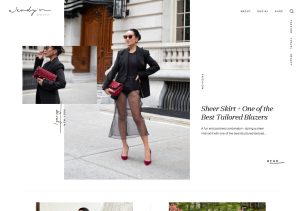
Wendy Nguyen shares polished and chic fashion ideas through Wendy’s Lookbook. Known for her detailed tutorials, elegant outfits, and heartfelt storytelling, Wendy has built a strong community that values her creative approach and inspiring fashion content.
Atlantic-Pacific 💻
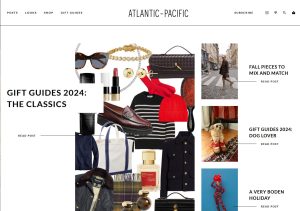
Blair Eadie’s Atlantic-Pacific blog is known for its bold, colourful, and high-fashion style. Blair’s unique way of mixing high-end pieces with affordable finds has resonated with fashion enthusiasts worldwide. Her distinctive and creative approach to fashion has helped her blog grow into a major influence in the fashion blogging sphere.
Free Training
Become a Super Affiliate Marketer 🚀
Sign up for our free affiliate marketing training & learn how you can become a super affiliate in any niche. Discover powerful traffic generation methods & little-known tactics to generate the most revenue for every single click.
How To Start a Fashion Blog In 10 Easy Steps
Starting a fashion blog might feel overwhelming, but by following these in-depth steps, you’ll have a clear path to creating a successful and inspiring platform.
1. Narrow Down Your Fashion Niche
Choosing the right niche for your fashion blog is foundational. With so many fashion bloggers out there, finding a unique angle is key to standing out and building a loyal audience.
Here’s how to identify the best niche for your blog:
Explore Different Fashion Niches
Fashion niches can range widely, and each has its own audience and trends. Consider niches like:
- Sustainable Fashion: Focus on eco-friendly brands, upcycling, and ethical shopping.
- Vintage or Thrift Fashion: Highlight retro finds, thrift store hauls, and vintage outfit ideas.
- Street Style: Showcase casual, everyday wear that’s trendy and accessible.
- Plus-Size Fashion: Cater to plus-size audiences with styling tips and brand recommendations.
- Luxury or Designer Fashion: Focus on high-end brands, luxury accessories, and fashion investments.
- Fashion on a Budget: Help readers find fashionable items without breaking the bank.
Identify Your Passion and Expertise
Think about what you genuinely enjoy about fashion and what expertise you bring. If you’re passionate about sustainable fashion, for instance, you’ll have more authentic content ideas and motivation to create consistently.
Research Your Audience
Once you’ve narrowed down a few potential niches, research the audience for each. Look into popular fashion blogs in these areas, social media trends, and related hashtags. This will give you insight into what type of content resonates and how you can fill a gap in the market.
2. Choose a Blogging Platform
Your blogging platform is the foundation of your blog’s structure, appearance, and functionality. Choosing the right one from the start is crucial for growth and flexibility.
Here are some of the top blogging platforms to choose from:
WordPress (❤ Our Top Recommendation)
WordPress is a self-hosted content management system (CMS for short) that offers unparalleled control and flexibility, making it the top choice for bloggers who want to build and grow a professional blog.
WordPress allows for extensive customization with thousands of themes and plugins, giving you full control over your site’s design and functionality.
With WordPress, you can optimize your blog for search engines using tools like Yoast SEO, and it’s highly scalable—whether you’re running a small personal blog or a large, complex site.
Because WordPress is self-hosted, you also have full ownership of your content and aren’t limited by the rules of a third-party platform.
While WordPress does require a bit more setup than some of the beginner-friendly platforms, most web hosts offer one-click installation, and there are countless tutorials available to help you get started.
Squarespace
Squarespace is known for its sleek and modern design templates, making it an appealing choice for bloggers who prioritize aesthetics. It provides a range of customization options, including blogging tools, social media integration, and basic e-commerce features.
However, Squarespace can be limiting when it comes to advanced customization, plugins, and SEO functionality. It’s a solid choice for visually focused, smaller blogs but may not offer the scalability needed for more extensive content or complex features.
Blogger
Blogger, owned by Google, is a free and simple blogging platform that’s been around for years. It’s easy to set up, integrates with Google AdSense for basic monetization, and is straightforward for new bloggers.
However, Blogger’s design and customization options are limited, and its functionality doesn’t match the needs of bloggers looking to grow a professional site.
Also, as a Google product, Blogger’s future is uncertain, as Google has discontinued many of its other free products over the years.
Why WordPress is Ideal for Bloggers
WordPress is highly recommended by us because:
- Customization: WordPress offers thousands of themes and plugins, allowing you to build a unique and feature-rich blog.
- SEO-Friendliness: With plugins like Yoast SEO, WordPress makes it easy to optimize content for search engines.
- Scalability: Whether you’re starting with basic content or planning to grow into an e-commerce site, WordPress can handle it.
- Ownership: Unlike free blogging platforms, you own your content on WordPress, which is essential if you plan to monetize.
How to Get Started on WordPress
To start on WordPress, you’ll need to set up web hosting, install WordPress (often a one-click process with most hosts), and choose a theme that aligns with your vision.
We’ll explain how you can do all of that below after we discuss securing a domain name.
3. Choose a Domain Name
Your domain name is your blog’s unique online address—what people will type into the browser to find you, like “yourfashionblog.com”.
Well, it’s more than just a web address; it’s a crucial part of your brand identity and can shape your blog’s first impression.
Choosing a memorable and fitting domain name helps establish credibility, makes it easier for readers to find and remember you, and positions your blog as a professional, lasting presence.
Why It’s Recommended to Get Your Own Domain
Owning your domain name shows your audience that you’re serious about your blog. Free platforms often give you a subdomain (like “yourfashionblog.squarespace.com”), but a custom domain (like “yourfashionblog.com”) looks more polished, signals professionalism, and builds trust.
A custom domain also makes it easier to monetize and gives you more control over your brand, allowing you to fully own your online space.
Tips for Choosing the Perfect Domain Name
- Keep It Short and Memorable
A simple, concise name is easier for people to remember and type into their browser. Avoid long, complicated names that might be misspelt or forgotten. Ideally, your domain should be no more than 2–3 words and under 15 characters. - Avoid Numbers and Special Characters
Using numbers, dashes, or special symbols can make your domain harder to remember and prone to typos. Stick to letters only for a cleaner, more professional look that’s easy to share. - Make It Relevant to Your Niche
Your domain should give visitors an idea of what your blog is about. If you focus on street style, for example, consider names like “UrbanChic” or “StreetWiseStyle.” Think about your blog’s tone and niche, and try to choose a name that reflects your brand’s personality and style. - Use Keywords (if possible)
Including a relevant keyword in your domain name can improve SEO and make it more discoverable on search engines. For example, if your blog is focused on sustainable fashion, names like “EcoChic” or “GreenCloset” incorporate keywords that tell search engines—and readers—what your site is about. - Consider Future Flexibility
As you choose your domain, consider your long-term goals. Avoid being overly specific if you might expand your blog’s focus later. A name like “StyleSimplicity” allows room to grow beyond any one type of fashion, whereas “MaxiDressTrends” may limit your blog if you branch into broader fashion topics.
Checking Availability and Securing Your Domain
Once you’ve brainstormed a few ideas, check if they’re available using domain-checking tools like Namecheap, GoDaddy, or Domain.com. These tools show you if your chosen domain name is available and suggest alternative options if it’s already taken.
After finding an available domain, act quickly to secure it! Domains are in high demand, and you don’t want to lose your perfect name to someone else.
Most domain providers offer registration services for a reasonable annual fee, and many web hosting companies also include a free domain for the first year when you sign up for hosting.
4. Buy Web Hosting
If you’re planning to use WordPress, securing reliable web hosting is essential. Your web host provides the space for your blog on the internet and directly impacts its speed, security, and reliability.
Choosing the right web hosting provider will give your blog a strong foundation, ensuring smooth performance and a great user experience.
What to Look for in a Web Hosting Provider
When selecting a host for your WordPress blog, consider these key features:
- Speed: Fast load times are crucial for both user experience and SEO. Slow sites can frustrate visitors and hurt search engine rankings. Look for hosts optimized for WordPress performance, as they often prioritize speed.
- Reliability: Consistent uptime, ideally at least 99.9%, ensures your blog is accessible at all times. A reliable host minimizes downtime, allowing your readers to visit whenever they want.
- Security: Security features like SSL certificates (which give your URL the “https” designation) and regular backups help protect your blog from threats. Many hosts include SSL for free, so check for this feature.
- Ease of Use: A good hosting provider offers a user-friendly control panel and one-click WordPress installation, which simplifies setup and ongoing maintenance. This is particularly useful if you’re new to blogging.
Recommended Web Hosts for Fashion Blogs
Here are two excellent options for affordable and reliable web hosting for your WordPress fashion blog:
- A2 Hosting: A2 Hosting is known for excellent speed and reliability at a budget-friendly price. It offers fast load times, free SSL certificates, and one-click WordPress installation, making setup easy and secure. A2 Hosting is a strong choice for bloggers looking for affordable, high-performance hosting.
- Wealthy Affiliate: Wealthy Affiliate offers a unique approach, combining hosting with extensive training and community support, which is ideal for beginners. It includes fast WordPress hosting, free SSL, and access to resources that teach you about blogging, SEO, and monetization. Wealthy Affiliate is great if you’re starting out and want a supportive platform to help you grow your blog.
Choosing the right web hosting provider will set your blog up for success, giving it the speed, security, and reliability needed to build and maintain a thriving fashion blog.
5. Choose a Theme
Your theme defines the look and feel of your blog, so it should reflect your brand’s personality and provide a good user experience.
Popular WordPress Themes for Fashion Blogs
- GeneratePress: Lightweight, customizable, and responsive. Ideal for fashion blogs focused on visuals.
- Astra: Highly flexible, with multiple starter templates tailored for different styles.
- Soledad: Known for its stylish layouts and magazine-style design, which can give your blog a high-end look.
Hint: Commission Academy is built on the GeneratePress theme 😎
Customizing Your Theme
Once you’ve chosen a theme, customize it to fit your brand. Change the colours, fonts, and layout settings to create a cohesive look.
Use a minimalist design that showcases your content without overwhelming readers.
6. Create Essential Pages
A few foundational pages help establish professionalism and make your blog more navigable.
Key Pages Every Fashion Blog Needs
- About Page: Tell your story, share what inspired you to start a fashion blog, and outline what readers can expect. A personal and approachable tone can help you connect with your audience.
- Contact Page: Offer a simple way for brands, collaborators, and readers to get in touch. Include a contact form or an email address, and link to your social media profiles.
- Privacy Policy: Required by law in many regions, a privacy policy informs readers about data collection and usage on your site. You can use a privacy policy generator to create this.
7. Carry Out Keyword Research
Keyword research is the process of identifying specific words and phrases that people type into search engines when looking for content related to your niche.
For a fashion blog, keyword research helps you understand what your target audience is searching for, allowing you to create content that meets their needs and boosts your visibility in search engines.
When done well, keyword research makes your blog posts more discoverable and attracts readers who are interested in your unique style and insights.
Tools and Techniques for Effective Keyword Research
Google Autosuggest
A simple, free way to start your keyword research is by using Google Autosuggest. This tool gives you insight into popular search terms as you begin typing in Google’s search bar.
When you enter a general keyword, Google will automatically suggest related phrases based on what others are searching for. These suggestions are often high-traffic keywords and can guide you toward specific topics that are in demand.
To use Google Autosuggest effectively:
- Type a general keyword related to your niche (e.g., “fall fashion trends”).
- Take note of the suggestions that appear in the dropdown as you type. These could be keywords like “fall fashion trends 2024” or “fall fashion trends for teens.”
- Experiment with different related words and phrases to find more long-tail keywords (e.g., “affordable fall fashion” or “eco-friendly fall fashion trends”), which tend to be less competitive and more specific.
Here’s an example:
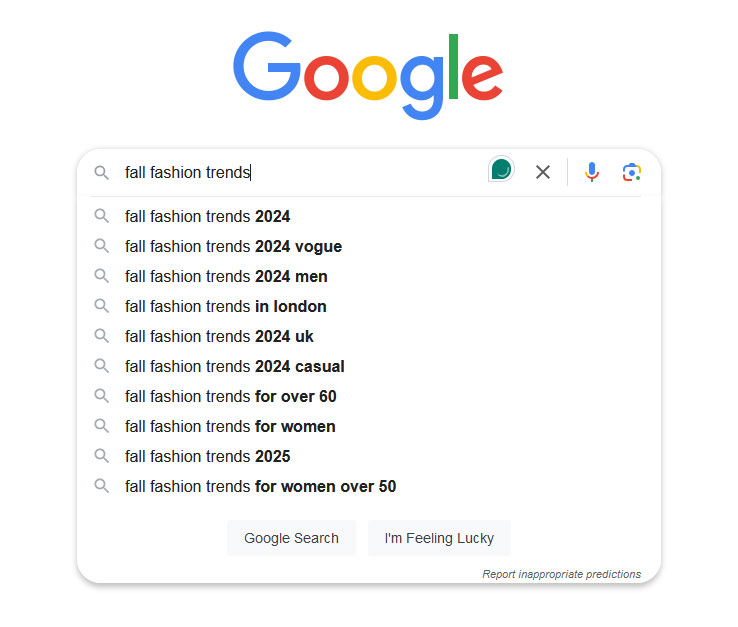
Google Autosuggest provides valuable insights into user intent and can help you generate a list of keywords that are relevant and popular with your audience.
Mangools (KWFinder)
For a more comprehensive approach to keyword research, Mangools and its keyword tool, KWFinder, offer detailed metrics that help you assess which keywords are worth targeting.
KWFinder provides data on Search Volume (the number of monthly searches for a keyword) and Keyword Difficulty (KD) (how challenging it will be to rank for that term).
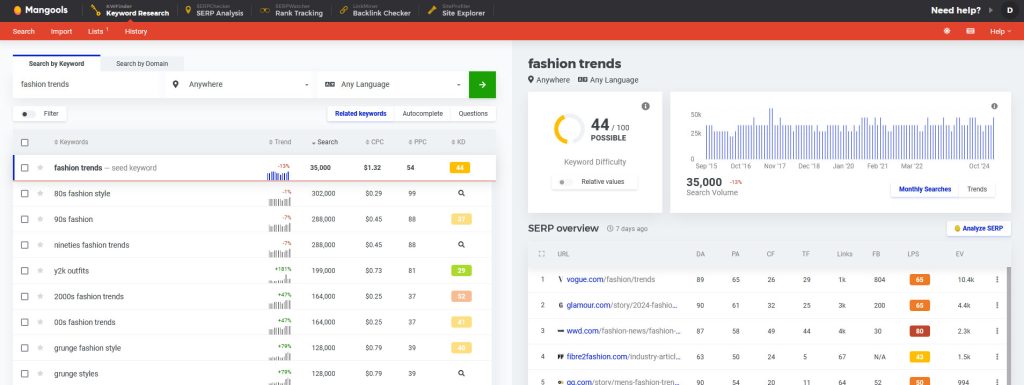
This tool is particularly helpful if you’re looking for keywords that balance good search volume with manageable competition.
Here’s how to use KWFinder:
- Enter a general keyword related to your content idea, such as “sustainable fashion brands.”
- Review the suggested keywords and metrics provided by KWFinder, including search volume and KD score.
- Look for long-tail keywords with moderate search volume and low to medium KD scores—these will be specific enough to attract the right audience while being easier to rank for than highly competitive keywords.
Using KWFinder, you can pinpoint keyword opportunities that match your content goals and are likely to draw targeted traffic to your blog.
Finding Keywords That Align with Your Niche
As you research keywords, aim to identify long-tail keywords—phrases that are more specific and typically consist of three or more words.
Long-tail keywords, such as “affordable eco-friendly fashion brands,” are valuable because they have lower competition but attract a focused audience interested in exactly what you offer.
For instance, if you’re a sustainable fashion blogger, targeting a broad term like “sustainable fashion” might be difficult due to high competition. Instead, consider long-tail keywords like “sustainable fashion brands under $100” or “eco-friendly fashion tips for beginners”.
These more specific phrases will help you attract readers who are closer to your niche and more likely to engage with your content.
Using tools like Google Autosuggest and Mangools (KWFinder) will enable you to find the right keywords that align with your niche, helping your content reach the audience that matters most.
8. Start Creating Content
Once you’ve completed your keyword research, it’s time to start creating content that will attract and engage your target audience.
The goal is to produce valuable, helpful content that aligns with the keywords you’ve chosen. By creating content that’s relevant to these keywords, your blog posts have a better chance of ranking in search engine results when people look for information related to those topics.
High-quality, optimized content helps bring the right visitors to your site and builds trust with your readers.
Creating Content That Meets Search Intent
Each piece of content you create should focus on answering questions or providing insights that are useful to your readers. For instance, if one of your keywords is “eco-friendly fashion tips,” consider writing a detailed guide on sustainable shopping habits, including actionable tips and examples.
Tailor your content to the intent behind the keywords—whether it’s informational (like a “how-to” guide), transactional (like a product review), or something else.
When your content aligns with what people are actively searching for, it’s more likely to appear in search engine results, attracting visitors who are genuinely interested in your blog’s focus.
Using AI Tools to Help with Content Creation
Creating high-quality content consistently can be time-consuming, but AI tools can make the process faster and easier. AI platforms like ChatGPT and Bloggomatic are designed to assist with content generation, allowing you to brainstorm, draft, and refine ideas more efficiently.
- ChatGPT: ChatGPT is a versatile AI tool that can help you brainstorm topics, outline articles, or even generate entire sections of your blog posts. You can ask it for creative ideas or to write drafts based on specific keywords or themes, saving time while maintaining quality. For example, if you’re working on a post about “affordable fall fashion trends,” you could prompt ChatGPT to suggest subheadings, content ideas, or even write initial drafts for each section.
- Bloggomatic: Bloggomatic is an AI-powered platform tailored specifically for blog content. It automates the creation of blog posts, using keywords to generate SEO-friendly content that helps attract organic traffic. Bloggomatic is particularly useful if you’re looking to produce content in bulk or if you want a reliable tool for generating keyword-focused articles that can be edited to suit your style.
By leveraging AI tools, you can streamline the content creation process, ensuring that your posts are relevant, optimized, and engaging for your readers.
However, remember to review and personalize the content to match your voice and add a unique touch, which will make your blog stand out in a crowded space.
Balancing Quality and Consistency
In content creation, consistency is as important as quality. Set a realistic posting schedule that you can maintain—whether it’s weekly, biweekly, or monthly—and stick to it.
Consistent posting helps you build a loyal audience and shows search engines that your site is active, which can positively impact your rankings.
As you create content, focus on delivering helpful, well-researched information that meets the needs of your readers. This approach not only improves your blog’s visibility in search results but also builds credibility, encouraging visitors to return and engage with your posts over time.
9. Promote Your Fashion Blog
Creating great content is only part of building a successful fashion blog; the next step is to actively promote it to reach a wider audience. Promotion is especially effective on visually-focused platforms, where you can showcase your style, creativity, and expertise in fashion.
By building a following on social media and other platforms, you not only attract readers to your blog but also help boost your website’s search engine rankings over time, as search engines recognize the popularity and engagement with your brand.
Key Platforms for Fashion Blog Promotion
Here are some of the top places for promoting fashion-related content:
Instagram is a must for fashion bloggers, as it allows you to share high-quality outfit photos, styling tips, behind-the-scenes glimpses, and personal fashion insights.
With Instagram Stories and Reels, you can showcase quick style tips, share new blog updates, and engage directly with your followers. Use platform-specific hashtags relevant to fashion, such as #OOTD (Outfit of the Day) or #FashionBlogger, to reach a broader audience.
To help you get a head start, here are some captions to attract customers on Instagram.
Pinterest is highly effective for driving blog traffic, particularly through visually appealing content like outfit lookbooks, styling guides, and mood boards.
Fashion posts perform well on Pinterest because users often search for style inspiration. Pin high-quality images from your blog posts and organize them into themed boards (like “Fall Fashion Essentials” or “Eco-Friendly Fashion”). Each pin can link directly to your blog, bringing in steady, organic traffic.
TikTok
TikTok’s short, engaging video format is perfect for fashion content, from quick styling tips and trend reports to outfit challenges and tutorials.
With fashion hashtags and trending sounds, you can reach a younger, fashion-forward audience. TikTok’s algorithm makes it possible for your content to go viral, potentially attracting thousands of new viewers and directing them to your blog.
YouTube
YouTube is a powerful platform for more in-depth content, such as fashion hauls, styling guides, seasonal lookbooks, and behind-the-scenes vlogs.
Videos on YouTube tend to have a longer lifespan than posts on other platforms, as people often search for fashion advice and tutorials.
You can optimize your videos with keywords in the title and description to improve visibility, and include links to your blog in each video’s description, driving traffic back to your website.
Strategies to Grow Your Following
- Engage with Other Bloggers: Commenting on and sharing posts from other fashion bloggers can build connections and boost your visibility. Engaging with other creators helps you tap into their audiences as well, which can lead to collaborations and more followers.
- Participate in Trends and Challenges: Whether it’s a hashtag challenge on Instagram or a viral trend on TikTok, joining in on popular trends can expand your reach and connect your blog with a wider audience.
- Collaborate with Influencers: Partnering with influencers or other fashion bloggers can establish credibility and broaden your reach. By collaborating, you gain access to their followers, who may become your blog’s new audience.
How Social Promotion Supports SEO
When you actively promote your blog on social platforms like Instagram, Pinterest, TikTok, and YouTube, you’re increasing visibility and driving traffic to your site. This social traffic signals to search engines that your blog is popular and relevant, which can positively impact your search engine rankings over time.
Additionally, as people share and engage with your content, you may gain backlinks from other sites and bloggers, further boosting your blog’s authority in search engines.
By leveraging these platforms to promote your fashion blog, you can grow a loyal audience, establish your online presence, and improve your site’s SEO—ultimately helping your blog rank higher in search results and attract even more readers.
10. Monetize Your Fashion Blog
Once you’ve built a steady audience, it’s time to explore ways to monetize your blog and turn it into a sustainable business. By choosing the right monetization strategies, you can generate income while providing value to your readers.
Here’s a breakdown of popular monetization options and how to get started.
Affiliate Marketing
Affiliate marketing is one of the most effective ways to earn income through a fashion blog.
By partnering with fashion brands, you earn a commission each time a reader makes a purchase through your unique affiliate link.
This method allows you to recommend products you genuinely love, while earning a percentage of each sale without holding any inventory.
To get started:
- Sign up for fashion affiliate programs through networks like LTK, ShareASale, or Amazon Associates. These platforms give you access to thousands of brands in one place, simplifying the process.
- Integrate affiliate links naturally within your blog posts. For instance, if you’re writing about “Top Summer Dresses,” include affiliate links to dresses from your partner brands.
- Be transparent with your audience by clearly labelling affiliate links, as this builds trust and complies with legal requirements. A simple disclaimer such as “This post contains affiliate links, which means I may earn a commission if you make a purchase through these links” can suffice.
Sponsored Posts
Sponsored posts are another lucrative way to monetize your fashion blog. In a sponsored post, a brand pays you to create content that features their products or services.
These collaborations can include dedicated blog posts, Instagram posts, or even YouTube videos, depending on the agreement.
To start securing sponsorships:
- Reach out to brands you already use and love, or look for opportunities on influencer platforms like Influencity or AspireIQ, where brands often seek bloggers for paid collaborations.
- Clearly disclose when a post is sponsored to maintain transparency with your audience. You could include a statement such as “This post is sponsored by [Brand Name], but all opinions are my own.”
- Create high-quality content that highlights the brand in a way that feels authentic and adds value to your readers. For example, if you’re partnering with a sustainable fashion brand, discuss how their pieces fit into an eco-friendly wardrobe.
Digital Products or Services
Creating and selling digital products or services is a great way to leverage your expertise and build a direct income stream. Digital products allow you to monetize your knowledge without requiring inventory or shipping.
Here are a few ideas to consider:
- Styling Guides: Create downloadable guides that offer styling advice, wardrobe essentials, or trend forecasts. For example, you could make a “Capsule Wardrobe Guide” or “Ultimate Guide to Sustainable Fashion.”
- E-books: Write an e-book on a topic you’re passionate about, such as “How to Build a Timeless Wardrobe” or “Fashion Tips for Every Season.”
- Personal Styling Consultations: Offer personalized styling sessions where readers can book one-on-one time with you for wardrobe advice or outfit planning. This can be done through virtual platforms like Zoom or Google Meet.
To sell these products, you can use platforms like Gumroad, Shopify, or Etsy to set up an online storefront.
Setting Up Affiliate Links
To succeed with affiliate marketing, it’s essential to join the right programs and use affiliate links effectively. Here’s how to set up affiliate links in a way that’s both strategic and transparent:
- Join Affiliate Networks: Sign up for affiliate programs through networks like LTK, ShareASale, and Amazon Associates. These networks connect you with numerous fashion brands and provide you with unique affiliate links for each product.
- Add Links Strategically: Place affiliate links in high-traffic posts or list-style articles like “Best Winter Coats” or “Top Fashion Picks Under $50.” Readers often look to these types of posts for recommendations, making them ideal for affiliate sales.
- Be Transparent: Trust is key in affiliate marketing, so always disclose when you’re using affiliate links. Inform your readers with a disclaimer at the beginning or end of each post containing affiliate links. A statement like “This post may contain affiliate links, meaning I earn a small commission if you make a purchase through my links at no additional cost to you” is a simple, effective way to maintain transparency.
Maximizing Monetization with Multiple Income Streams
Combining several of these monetization options can help you create a diversified income stream, making your blog more sustainable over the long term.
For example, you could earn commissions from affiliate marketing, work with select brands on sponsored posts, and sell styling guides to readers interested in deeper fashion insights.
This balanced approach not only increases your income potential but also keeps your content engaging and varied for your audience.
The Bottom Line
Starting a fashion blog offers an opportunity to blend creativity, style, and entrepreneurship. By understanding your niche and audience, choosing the right tools, and consistently creating engaging content, you’ll be well on your way to building a successful blog.
If you’re interested in turning your fashion blog into a source of income, affiliate marketing can be a brilliant avenue. It’s an effective way to monetise your passion by recommending items you genuinely love and use.
To make the most out of affiliate marketing, consider exploring resources like those offered here at Commission Academy. We offer a free course designed to teach you the ins and outs of earning money online through creating compelling content and smart affiliate strategies.
So, before you go, why not take a moment to check out our course? It could be the perfect companion to your blogging journey, helping you reach your ambitions with a bit of expert guidance.
And, of course, if you happen to have any questions at all about anything mentioned above, don’t hesitate to leave them below. We’re always happy to help.

